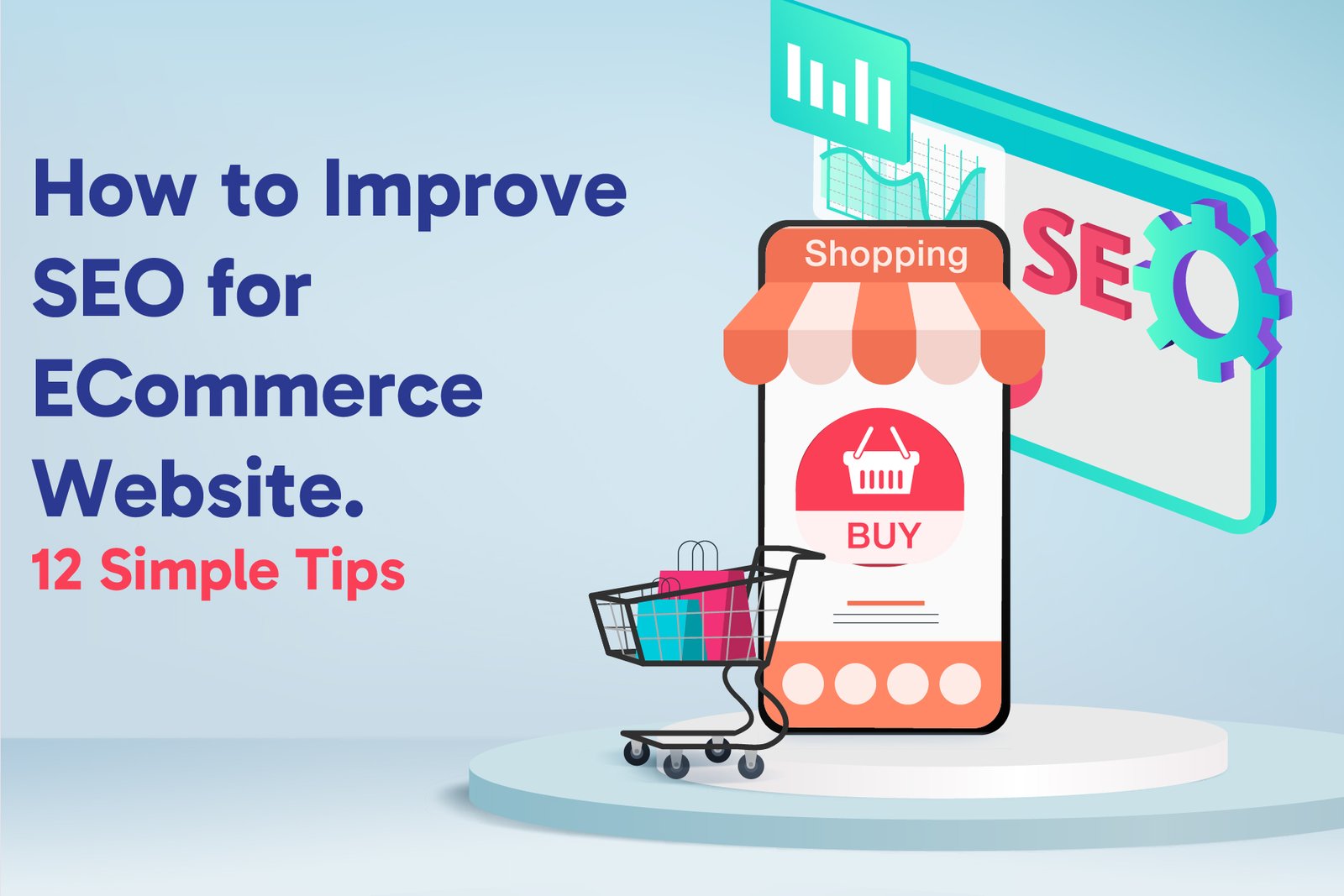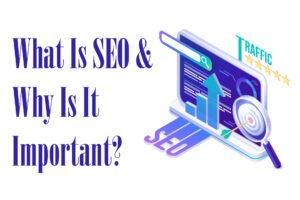Your strategy decides how successful Search Engine Optimization (SEO) is. If your eCommerce website hopes to pull in visitors, convert them into leads, and make sales, it needs to work with an elaborate and well-defined plan, going beyond the basics.
And here comes the issue, which is that SEO is not how it used to be. Artificial intelligence, automation, and Google’s Search Generative Experience (SGE) have already changed the way searchers find and engage with the search results. Therefore, going forward, ecommerce cannot afford the luxury of classic techniques like keyword stuffing and duplicate content. Instead, the focus must be laid on sustainable methodologies that improve visibility, promote a user’s experience, and ultimately establish long-term trust with customers and search engines alike.
This guide will explain the 12 SEO for ecommerce websites tips that have been presented in detail by experts. All these tips will enhance your chances of ranking higher, optimizing conversions, and staying ahead of competitors.
1. Perform Keyword Research That Considers Buyer Intent
Keyword research is not only about identifying the popular keywords; it is about coming to an understanding of why the individual is searching.
- Informational intent: “how to clean suede shoes” type questions.
- Commercial intent: “buy suede shoe cleaner online” type phrases.
Tools such as Google Keyword Planner, Ubersuggest, or AnswerThePublic can help visualize what your customers are typing and enable you to create their internet-related content in support of the entire stages of the buyer journey.
2. Don’t Forget Long-Tail Keywords
The term “sneakers” appended with such general, short keywords is heavily competitive. Rather, you can opt for Long-tail keywords like “best running sneakers for flat feet women,” which may not generate the same portion of traffic, but they are much more effortless to rank for and convert nicely.
You can also try utilizing Google autocomplete and “People Also Ask” boxes together with keyword tools to get more long-tail opportunities, which are especially valuable for ecommerce sites in highly competitive markets.
3. Optimize Product Pages to Improve Ranking
Your product and category pages make up your online storefront. Optimize them for:
- Write unique, keyword-rich descriptions (not manufacturer copy)
- You need to use a clear, descriptive URL.
- Also, add quality-high images with ALT text
- Leverage customer reviews and ratings to improve trust
- Lastly, include CTAs that compel.
Product pages optimized become more than search-friendly; they also facilitate higher conversion rates.
4. Make Sure Your Site Is User-Friendly
SEO and user experience go hand in hand. Google rewards websites that provide value and frustrate users less. A user-friendly ecommerce site should:
- Load quickly on desktop and mobile
- Have intuitive navigation and categories
- Avoid intrusive pop-ups and clutter
- Be accessible to all users (fonts, alt text, contrast)
If shoppers can find what they need quickly and enjoy the process, your SEO metrics, such as time on site, as well as the bounce rate, will improve as well.
5. Use a Simple URL Structure
If you are using cleaner and neater URLs, then you are on the right path, as you are making things easier for both humans and search engines to understand.
– The right way: www.store.com/women/running-shoes
– The Wrong way: www.store.com/product?id=12345&cat=567
Instead, include keywords in your URLs rather than using “and”, “the”, and add clear menus for better navigation and indexing.
6. Utilize Schema Markup to Assist Search Engines
Schema markup is kind of a hidden way to give Google more context about your products. In ecommerce, it is capable of producing rich snippets like this:
- Price
- Availability
- Star ratings
- FAQs
This detail enriches your listings on search and, therefore, consistently improves click-through rates.
7. Rework Existing Content with SEO Updates
Your old content simply requires an update. Rather than deleting the old and creating something new, on your company’s blog, re-optimize by:
- Fresh new stats or images
- Updating links that are not working anymore, or product details
- Keywords improved and enhanced
- Fixing grammar and readability
Refreshing content keeps it fresh in the eyes of your clients and signals to Google that the page was checked and refreshed.
8. Don’t Let Page Speed Kill Your Ranking
A slow-loading website is a dealbreaker for users and Google. To boost site speed:
- Compress and optimize images
- Use a reliable hosting provider
- Enable caching
- Minify code (CSS, JavaScript)
Run your site through Google PageSpeed Insights to identify problem areas and fix them quickly.
9. Improve Ecommerce Content Beyond Products
Yes, your product pages are important, but supportive content can be compelling in driving traffic. Blog posts, buying guides, how-to articles, and even videos will go a long way in answering customer questions and creating trust.
For instance, an outdoor gear store may publish titles such as:
- “10 Must-Haves for a Weekend Camping Trip”
- “How to Choose the Right First Hiking Boots”
This sort of content produces authority, builds incoming backlinks, and overall improves the site’s ECommerce SEO.
10. Build Quality Backlinks and Internal Links
Backlinks from credible websites are an important way for Google to figure out how reliable your store really is. Some strategies for building backlinks include:
- Guest posts on industry blogs
- Engagement with influencers
- Creation of highly shareable resources
Don’t forget about internal linking! A blog can be linked to its product pages, and category pages can be linked to their subcategories. This provides additional paths for shoppers and also helps direct search engines through your site.
11. Keep Your Site Mobile-Friendly
With the majority of the shopping done through a smartphone, having a responsive design is a must. Google algorithms work on a mobile-first principle; hence, any lack of optimization for smaller screens will bring all your rankings crashing down.
Make Google Mobile-Friendly Test check and ensure your site has pages loading smoothly across all devices.
12. Track, Review, and Refine Your SEO Strategy
SEO for an ECommerce site isn’t something you ‘set and forget’. You still need tracking tools like:
– Use Google Analytics tool for traffic, conversions, and bounce rates
– Use Google Search Console for keyword rankings, indexing issues
– Use SEO Plugins AIOSEO for on-page optimization, schema, and WooCommerce support
Tracking performance metrics and continuously adjusting tactics keeps the ranking climbing up or maintains position and helps you stay ahead of competitors.
Improve Your Ecommerce SEO with Cognitive IT Solutions
A successful SEO for ECommerce website campaign should do more than win search engine rankings. If done well, it should further serve its purpose of locating the proper audience, fostering a relationship of trust, and driving sales. By implementing tried and tested means such as keyword research, a clean site structure, technical optimization, and engaging content, the visibility will improve while customers will have a happy experience from the very first click through to check out.
So put an end to your “how to improve SEO” search, because at Cognitive IT Solutions, we go deeper than SEO on the surface. We are a full-service technology partner with custom software development, advanced SEO solutions, and intelligent automation services aimed at businesses interested in scaling.
Our SEO team can assist with anything from improving seo for ecommerce product pages to upgrading your homepage’s technical architecture, automating essential tasks, and much more with their tools and expertise.
We don’t believe in one single strategy that would work out for everyone. Every one of our SEO strategies is customized for your specific business needs, guaranteeing that your company will enjoy long-term growth and measurable results.
Last But Not Least
Building an ecommerce website is not about making hacks and shortcuts. It is about smart keyword research, technical best practices, great content, and an excellent shopping experience.
As the search evolves with AI and the SGE of Google, applying these 12 tips keeps your store visible and relevant and helps convert browsers into buyers.
Frequently Asked Questions (FAQs)
How to improve SEO of an eCommerce website?
To start things off great, conduct excellent keyword research, optimize product pages, make the site speed, mobile-friendly, clean URLs, add fresh content, and by the way, don’t forget backlinks, internal links, and even schema markup, all of which will make it more effortless for Google to understand your site. You can also look for SEO services Toronto or any other service provider in your region to improve your website’s SEO ans start climbing up in search engines.
What are the 4 pillars of SEO?
The four pillars are:
- Technical SEO
- On-Page SEO
- Off-Page SEO
- Content
What are the 3 C’s of SEO?
The three C’s are Content – what you publish; Code – how your site is built for search engines; and Credibility – which comes from links and trust signals.
What are the 4 types of SEO?
The four types of SEO-Pages, such as Technical, Offsite, and Local-SEO, together optimize your site, construct authority, and allow people to see that you are locally present.










